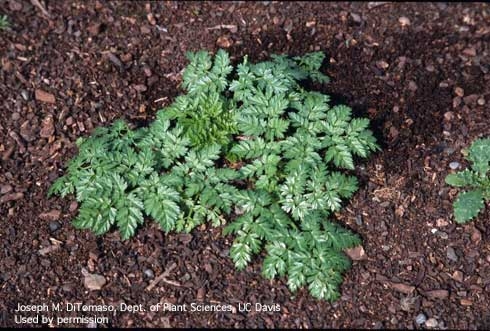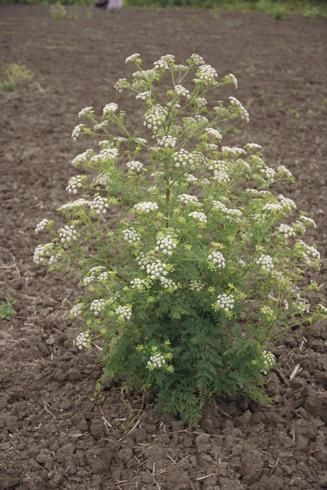Poison hemlock, Conium maculatum, was brought from Europe into the U.S. as an ornamental in the 1880s and now occurs throughout North America. In California it is most commonly found at lower elevations and coastal regions but it is continuing to spread into other areas.
Although made famous by Shakespeare and other literary giants as a murder weapon, cases of human poisoning are rare in California; however, poison hemlock is a serious concern to the livestock industry. Cattle, goats and horses are most sensitive to the plant’s toxic alkaloids but pigs, sheep, elk, turkeys and wild animals may also be poisoned.
A new Pest Note: Poison Hemlock outlines identification, biology, impact and management for poison hemlock. It also includes a map of the weed’s distribution in California and areas where it is spreading. Poison hemlock is a biannual plant which grows as a low rosette in its first year and, in the second year, develops tall, up to 6 feet high or more, branching stems that bear small white flowers in spring through early summer.
Find the Pest Note: Poison Hemlock at http://www.ipm.ucdavis.edu/PMG/PESTNOTES/pn74162.html. Authors are J.M. DiTomaso, Plant Sciences, UC Davis; J.A. Roncoroni, UCCE Napa; S.V. Swain, UCCE Marin County; and S.D. Wright, UCCE Tulare/Kings County. 
During the first year, poison hemlock grows as a low rosette. Photo by J.M. DiTomaso
In the second year, plants may grow up to 6 feet tall or more and flower in spring through summer. Photo by J.M. DiTomaso
